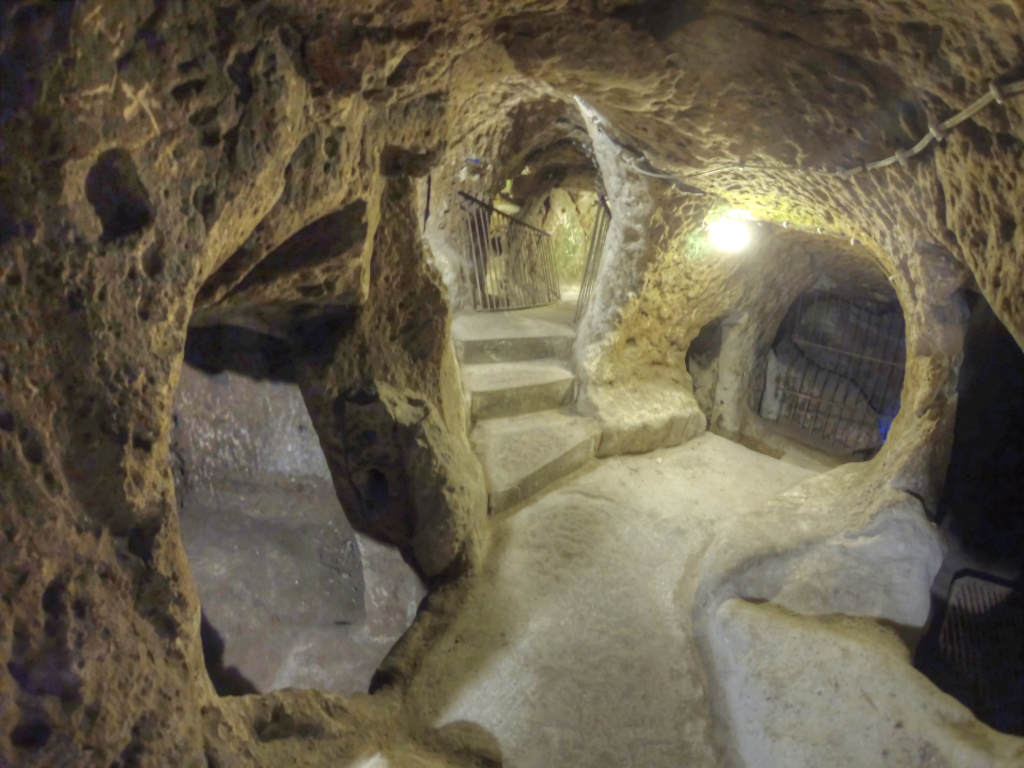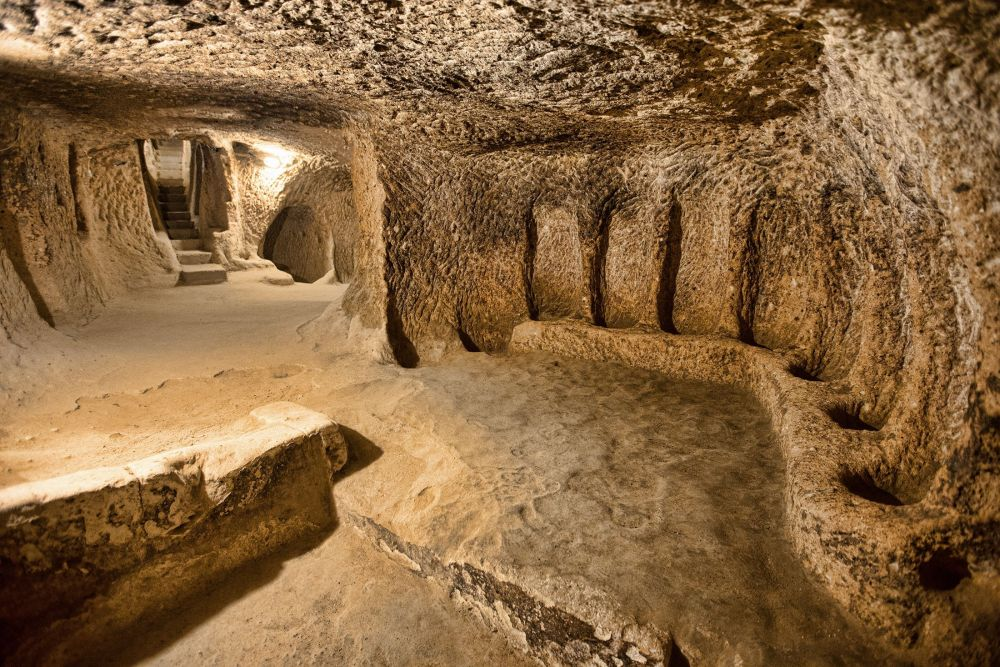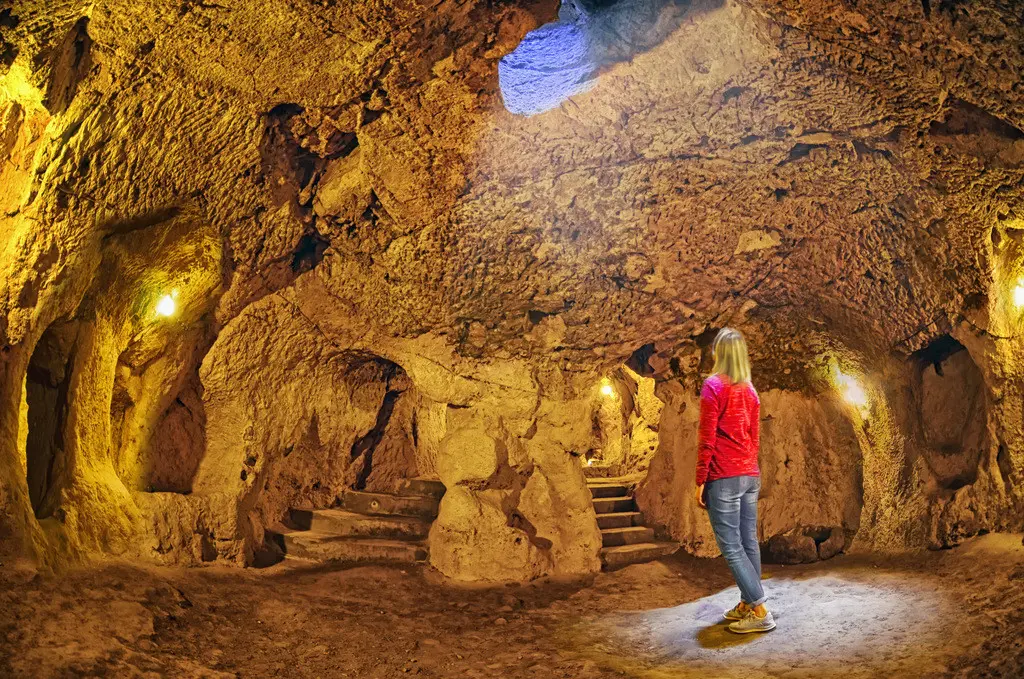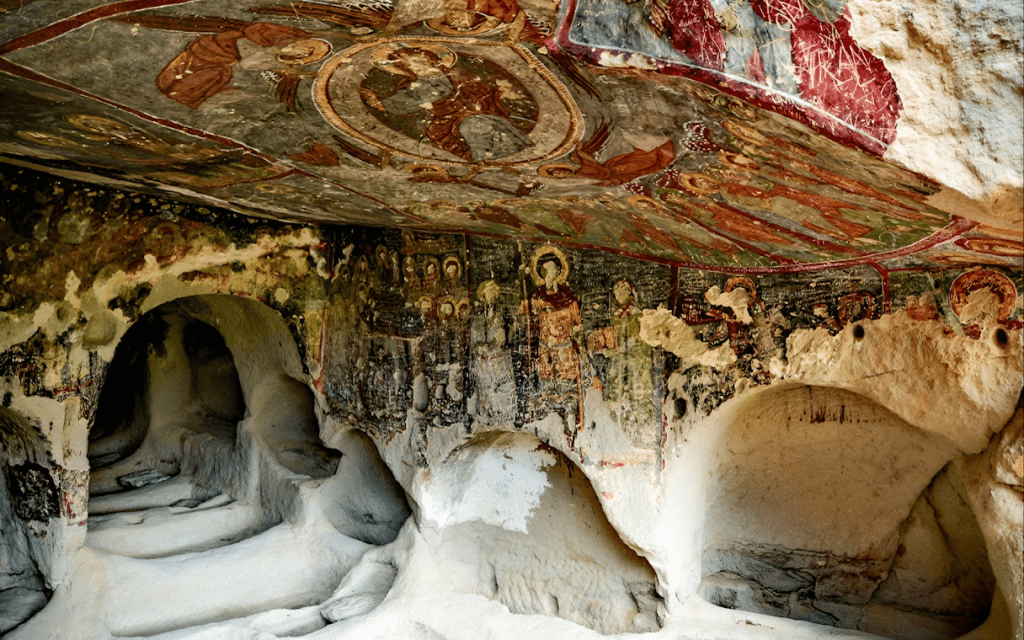In 1963, a man renovating his home in the small Turkish town of Derinkuyu made an extraordinary discovery. While knocking down a wall in his basement, he stumbled upon a mysterious room that led to a narrow tunnel. That tunnel didn’t end after a few feet. It twisted and descended into the earth, revealing one of the most astonishing archaeological finds of the century a sprawling underground city carved deep beneath the Anatolian soil.
What he uncovered was not just a cellar or forgotten storage room. It was the entrance to a vast subterranean network that would soon be recognized as one of the largest underground cities in the world.

An Ancient City Hidden Beneath the Surface
Derinkuyu is located in the Cappadocia region of central Turkey, an area known for its surreal landscapes and volcanic rock formations. Beneath this soft volcanic rock, ancient inhabitants had carved out a labyrinth of tunnels and chambers spanning multiple levels.

The city descends more than 200 feet underground and is believed to have once housed up to 20,000 people along with their livestock and supplies. Derinkuyu contains everything needed for long-term habitation, including kitchens, bedrooms, wells for water, chapels for worship, wine and oil presses, communal rooms, and even schools.
Despite the extreme age of the site, the level of engineering is impressive. Air shafts provided ventilation to the deepest levels, and massive stone doors were installed that could be rolled into place to seal off certain sections during emergencies. These doors could only be opened from the inside, offering critical protection to those hiding within.
Video:
Derinkuyu | The Lost Ancient City Found in a Man’s Basement
A Refuge in Times of Persecution
Historians believe the city was used as a safe haven during times of war, invasion, and religious persecution. While the exact origin of Derinkuyu remains debated, it was likely expanded over centuries by different civilizations including the Phrygians, Persians, early Christians, and Byzantines.
Christian communities in particular are believed to have used the underground tunnels during periods of Roman and later Arab persecution. The chapels found deep within the city offer clues that this space was not just for survival but also for spiritual refuge.

During attacks, residents could retreat into Derinkuyu and stay hidden for weeks or even months. The city’s design allowed for complete isolation from the surface, while secret entrances made it difficult for enemies to locate or breach the complex.
Architectural Ingenuity in Ancient Times
What makes Derinkuyu so remarkable is not just its size but the intelligence behind its construction. The builders took advantage of the soft tuff rock, which was easy to carve but hardened when exposed to air. This made it ideal for creating rooms that were both functional and structurally sound.
Video:
Inside the Underground City once Housed 20,000 People: Derinkuyu
Each level was carefully planned to support life without modern conveniences. Wells were dug to provide fresh water. Storage rooms held food supplies. Air shafts reaching up to the surface ensured a steady flow of oxygen. Even livestock had their designated areas.
Despite its complexity, the city remained hidden for centuries. Locals knew of smaller cave systems in the region, but Derinkuyu’s full extent remained a mystery until that fateful discovery in 1963.
A Living Testament to Human Resilience
Today, Derinkuyu stands as one of the most powerful examples of human resilience and adaptability. It tells a story of people who faced existential threats yet found ways to survive, not by running but by digging deep literally into the earth.
Visitors can now explore parts of the city that have been made safe for tourism. Wandering through its narrow corridors, ducking beneath low ceilings, and imagining life in the underground depths offers a glimpse into the past that is both humbling and awe-inspiring.

It is easy to see why Derinkuyu continues to captivate archaeologists, historians, and travelers alike. This hidden city is more than an ancient shelter it is a symbol of survival, innovation, and the unbreakable human spirit.
Conclusion: More Than Just a Tourist Site
While Derinkuyu has become a popular destination for travelers seeking adventure and history, its deeper meaning cannot be overlooked. It serves as a reminder of what people can accomplish in the face of hardship. It also challenges us to rethink what ancient civilizations were capable of.
Hidden in the heart of Turkey, beneath an ordinary neighborhood, lies a city that once saved thousands. The next time you walk across solid ground, imagine what might lie beneath your feet a story, a refuge, an entire world patiently waiting to be remembered.



